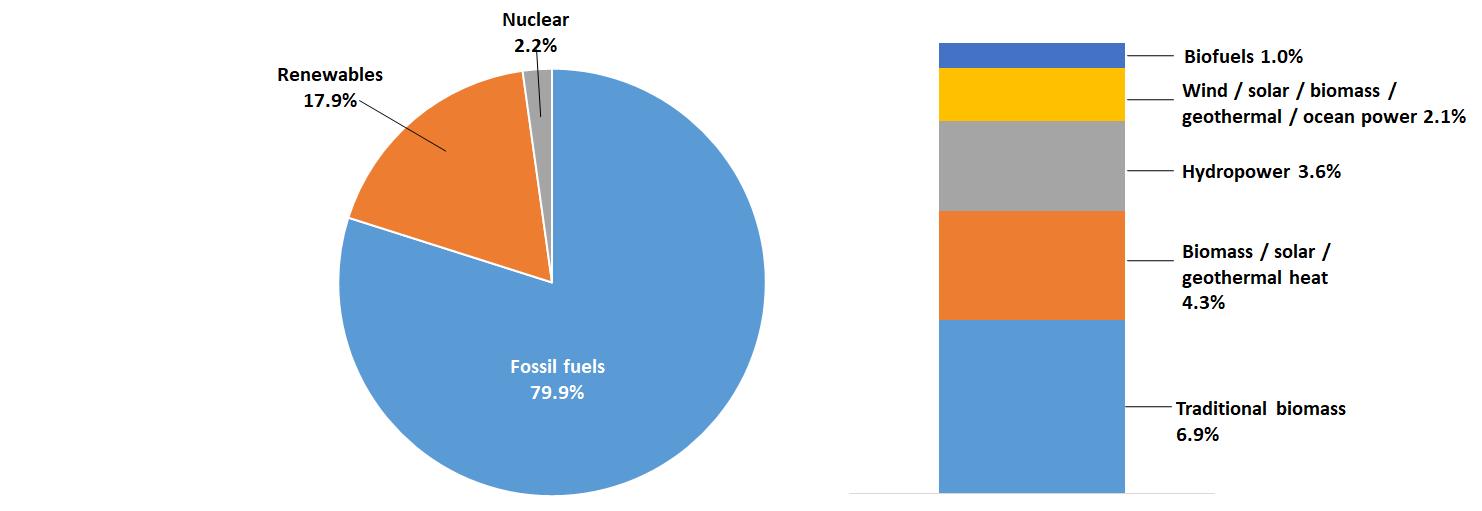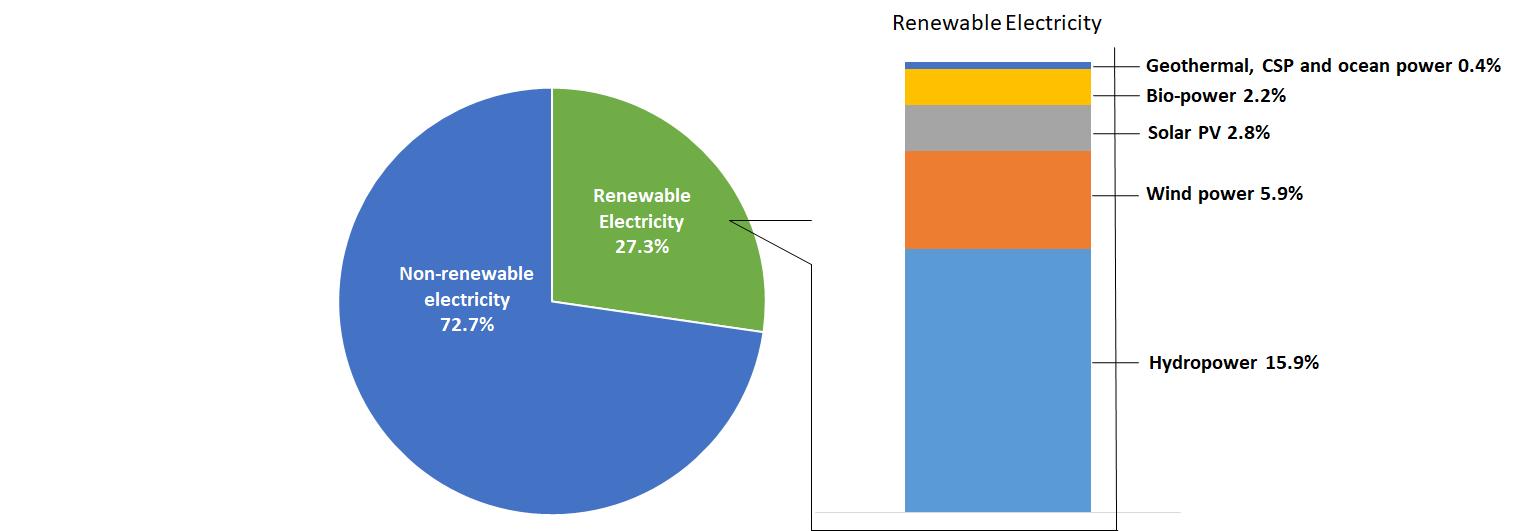ENERGY
New and Renewable Energy
What is renewable energy and why use it?
Most energy resources in the world are derived from fossil fuels (coal, oil, and natural gas) which lead to Greenhouse Gas (GHG) emissions (including carbon dioxide, methane, nitrous oxide) and other air pollutants. Fossil energy is not renewable, drawing on finite resources that will eventually dwindle. In contrast, renewable energy resources are clean sources of energy with much lower environmental impacts. Renewable energy is energy that occurs naturally and repeatedly in the environment and can be used for human benefit. Renewable energy sources are secure and inexhaustible, in the sense that there is no problem of being used up. Typical examples are energy from the sun, wind, ocean, plants, waves, running water, and wastes.
Benefits of renewable energy use
Renewable energy can create many benefits for human and environment, including environmental improvement, increased fuel diversity and energy security, and regional economic development benefits. Using fossil fuels—coal, oil and natural gas—to make electricity pollutes the air, consumes and pollutes water, hurts plants and animal life, creates toxic wastes, and causes global warming. Renewable energy resources can provide many immediate environmental benefits by avoiding these impacts and risks and can help conserve fossil resources for future generations.
In 2018, about 18% of global final energy consumption came from renewables, with 6.9% coming from traditional biomass, which is mainly used for heating, and 3.6% from hydroelectricity. New renewables (modern biomass, wind, solar, geothermal, ocean and biofuels) accounted for another 3.1%.
Energy sources of global final energy consumption in 2018

Estimated Renewable Energy Share of Global Electricity Production in end-2019

References:
- [1] Renewables 2020 – Global Status Report, Renewable Energy Policy Network for the 21st Century
- [2] Renewable Energy Technology